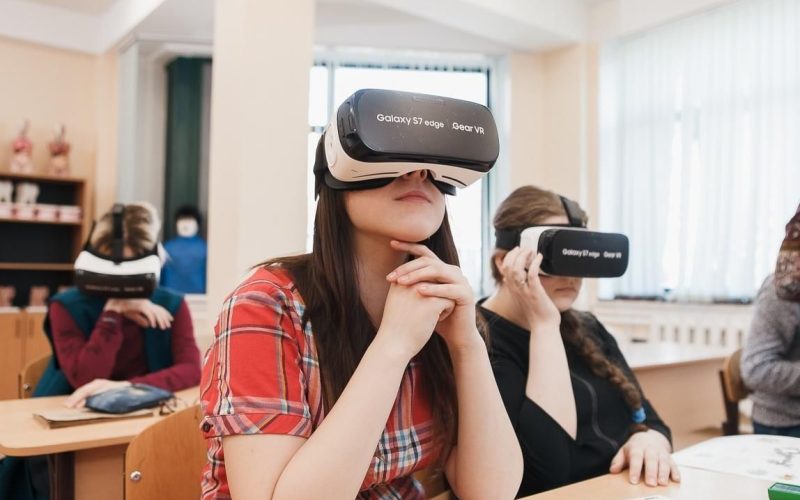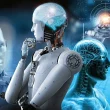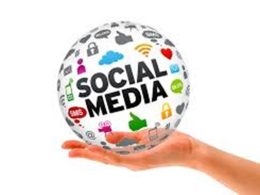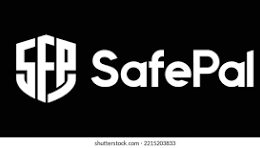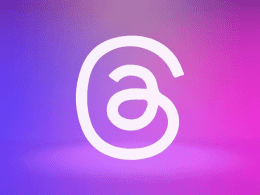In an age where technology continually reshapes the world, virtual reality (VR) is emerging as one of the most transformative tools in education. It goes beyond conventional learning methods, offering students immersive, engaging, and interactive experiences that traditional classrooms simply cannot provide. From bridging the gap between theory and practice to personalizing learning for individual students, VR is redefining how knowledge is imparted. This article delves into how VR is changing education, exploring its benefits, real-life examples, and case studies that highlight its revolutionary impact.
1. Immersive Learning Environments
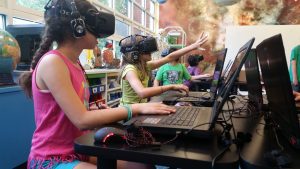
One of the most exciting aspects of VR in education is the ability to transport learners to entirely new environments. Imagine walking through the streets of ancient Rome during a history lesson or exploring the vastness of the Milky Way while studying astronomy. VR makes such experiences possible.
Benefits of Immersive Learning
- Enhanced Engagement: By placing students in 3D environments, VR captivates their attention, making learning more enjoyable.
- Improved Retention: Studies suggest that students retain information better when they experience it visually and interactively.
- Safe Experimentation: VR allows learners to explore scenarios, such as chemical reactions or medical procedures, without the risks associated with real-life experimentation.
Example: VR in History Classes
In history classes, VR applications like TimeLooper allow students to travel back in time. They can witness historical events, such as the signing of the Declaration of Independence or the fall of the Berlin Wall, bringing history to life in ways textbooks cannot.
2. Remote Education Revolution
Distance learning has grown exponentially in recent years, but it often struggles with maintaining engagement and fostering collaboration. VR offers solutions that make remote education more interactive and inclusive.
Virtual Classrooms
Platforms like Engage VR and VRChat enable students and teachers to meet in virtual spaces that replicate real classrooms. These environments allow for activities like group discussions, presentations, and even virtual field trips.
Benefits for Remote Learners
- Increased Interaction: Students can collaborate with peers worldwide in real-time.
- Elimination of Isolation: VR creates a sense of presence, reducing feelings of isolation common in remote learning.
- Inclusivity: Students with disabilities can participate fully in virtual classrooms designed to meet their needs.
Case Study: Arizona State University
Arizona State University integrated VR into its online courses, allowing students to attend virtual labs. In these labs, students conduct experiments and collaborate with peers, simulating the experience of being on campus.
3. Personalized Learning Opportunities
Every student learns differently, and VR provides the tools to tailor educational experiences to individual needs.
Custom Learning Environments
Through VR, students can learn at their own pace. For instance, language learning apps like MondlyVR simulate real-life conversations, helping students practice speaking in a stress-free environment.
Special Education
VR is particularly beneficial for students with disabilities. Programs like zSpace create safe, controlled learning environments where students can practice skills like social interaction or motor coordination.
Example: Language Learning
In a VR-based language class, students can visit virtual marketplaces, interact with native speakers, and practice vocabulary in realistic settings. This immersive approach significantly improves fluency and confidence.
4. Bridging Theory and Practice
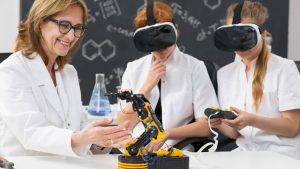
Fields like medicine, engineering, and architecture require students to apply theoretical knowledge to practical scenarios. VR bridges this gap by offering realistic simulations.
VR in Medicine
Medical students can use VR to perform virtual surgeries, gaining hands-on experience without the risk of harming patients. Tools like Osso VR provide detailed, interactive simulations for surgical training.
Engineering and Architecture
VR allows engineering students to design and test prototypes in a virtual space, identifying flaws before creating physical models. Similarly, architects can walk through their designs to visualize spaces and make adjustments.
Case Study: Stanford University
Stanford University uses VR in its engineering program to teach students how to operate complex machinery. By practicing in a virtual environment, students gain confidence and expertise before working with real equipment.
5. Global Collaboration and Cultural Exchange
VR is breaking down geographical barriers, enabling students from different parts of the world to collaborate in shared virtual spaces.
Cross-Cultural Interaction
In VR environments, students can interact with peers from different cultures, fostering global awareness and empathy. Virtual exchange programs are becoming a reality, allowing students to experience diverse perspectives.
Example: Collaborative STEM Projects
STEM students can use VR to work on joint projects with peers worldwide. For instance, a group of students from Japan and the United States can design a virtual robot together, learning about each other’s cultures in the process.
6. Teacher Training and Professional Development
Educators also stand to benefit significantly from VR. By simulating classroom scenarios, teachers can refine their skills in a risk-free environment.
Simulated Classroom Scenarios
VR training programs can replicate challenging classroom situations, such as managing disruptive students or teaching complex concepts. This prepares educators to handle real-world challenges more effectively.
Example: TeachLivE
TeachLivE is a VR platform that helps teachers practice classroom management. By interacting with virtual students, educators can improve their techniques without real-world consequences.
Tips for Using VR in Education
| Tips for Students | Tips for Educators |
|---|---|
| Explore VR apps that align with your subjects | Invest in training to maximize VR’s potential |
| Use VR for group projects and collaboration | Choose VR platforms tailored to your curriculum |
| Take breaks to avoid VR fatigue | Monitor student engagement during VR sessions |
| Research affordable VR devices | Ensure content aligns with learning outcomes |
This comprehensive article reflects the transformative potential of VR in education and offers insights into its applications and benefits. Let me know if you need further refinements or additional sections!
7. Applications in STEM Education
STEM fields—science, technology, engineering, and mathematics—are particularly well-suited to VR integration.
Simplifying Complex Concepts
VR allows students to visualize abstract scientific phenomena, such as molecular structures or gravitational forces, in 3D. This helps them grasp difficult concepts more easily.
Virtual Labs
Platforms like Labster provide virtual labs where students can conduct experiments, analyze results, and learn through trial and error.
Example: Physics Simulations
In physics classes, VR can simulate scenarios like projectile motion or electricity flow, allowing students to observe principles in action without the need for expensive equipment.
8. Challenges and Limitations of VR in Education
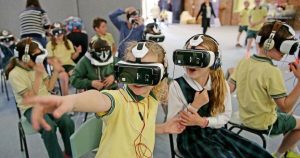
While VR holds immense promise, it also faces several challenges.
High Costs
VR equipment and software can be expensive, making it inaccessible for some schools and institutions.
Teacher Training
Educators need to be trained to use VR effectively. Without proper training, the technology may fail to achieve its potential.
Content Development
Creating high-quality VR content requires time and expertise, posing a challenge for widespread adoption.
9. Future Prospects
Despite these challenges, the future of VR in education looks bright. As technology advances and becomes more affordable, VR is expected to become a standard part of classrooms worldwide.
Potential Developments
- Affordable Devices: The rise of cost-effective VR solutions like Google Cardboard is making the technology more accessible.
- AI Integration: Combining VR with artificial intelligence could create even more personalized learning experiences.
- Expanded Applications: From vocational training to arts education, VR’s potential uses are virtually limitless.
Conclusion
Virtual reality is revolutionizing education by making learning more immersive, interactive, and accessible. From personalized learning experiences to global collaboration, VR is unlocking new possibilities for students and educators alike. While challenges like cost and teacher training remain, the continued advancement of VR technology promises a future where education knows no boundaries. Whether it’s helping a student explore the wonders of the universe or training the next generation of surgeons, VR is proving to be an invaluable tool in shaping the education of tomorrow.






